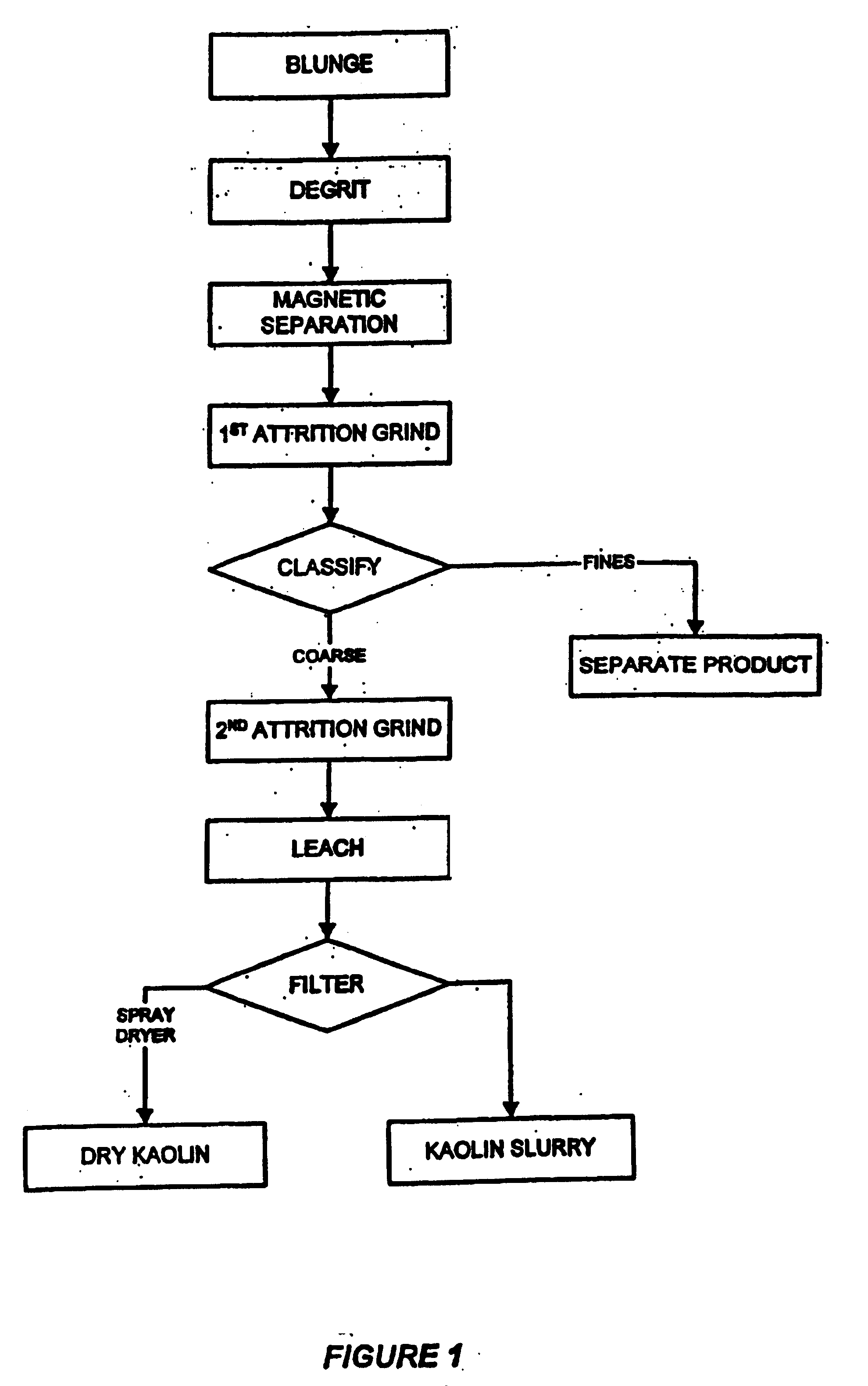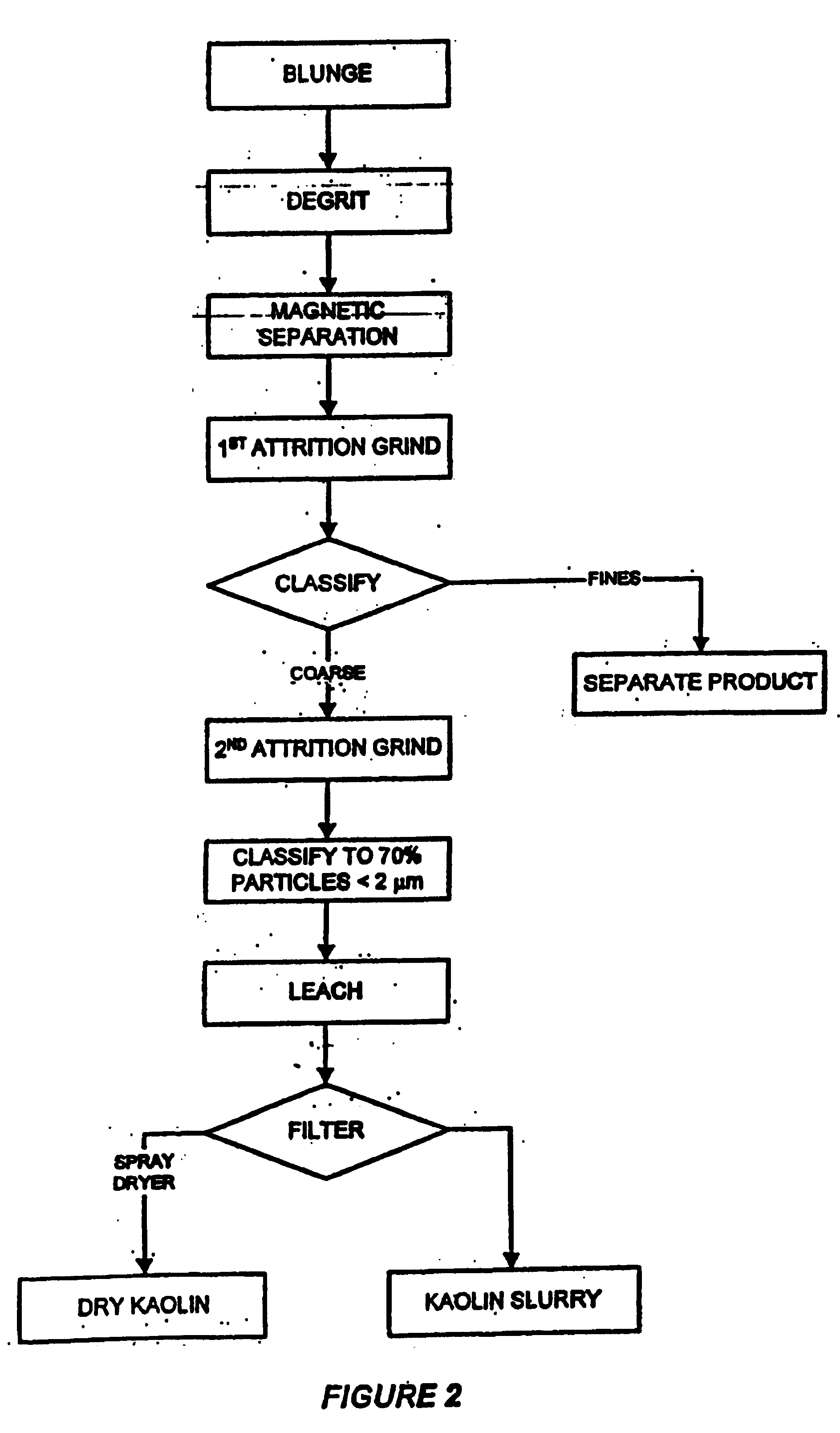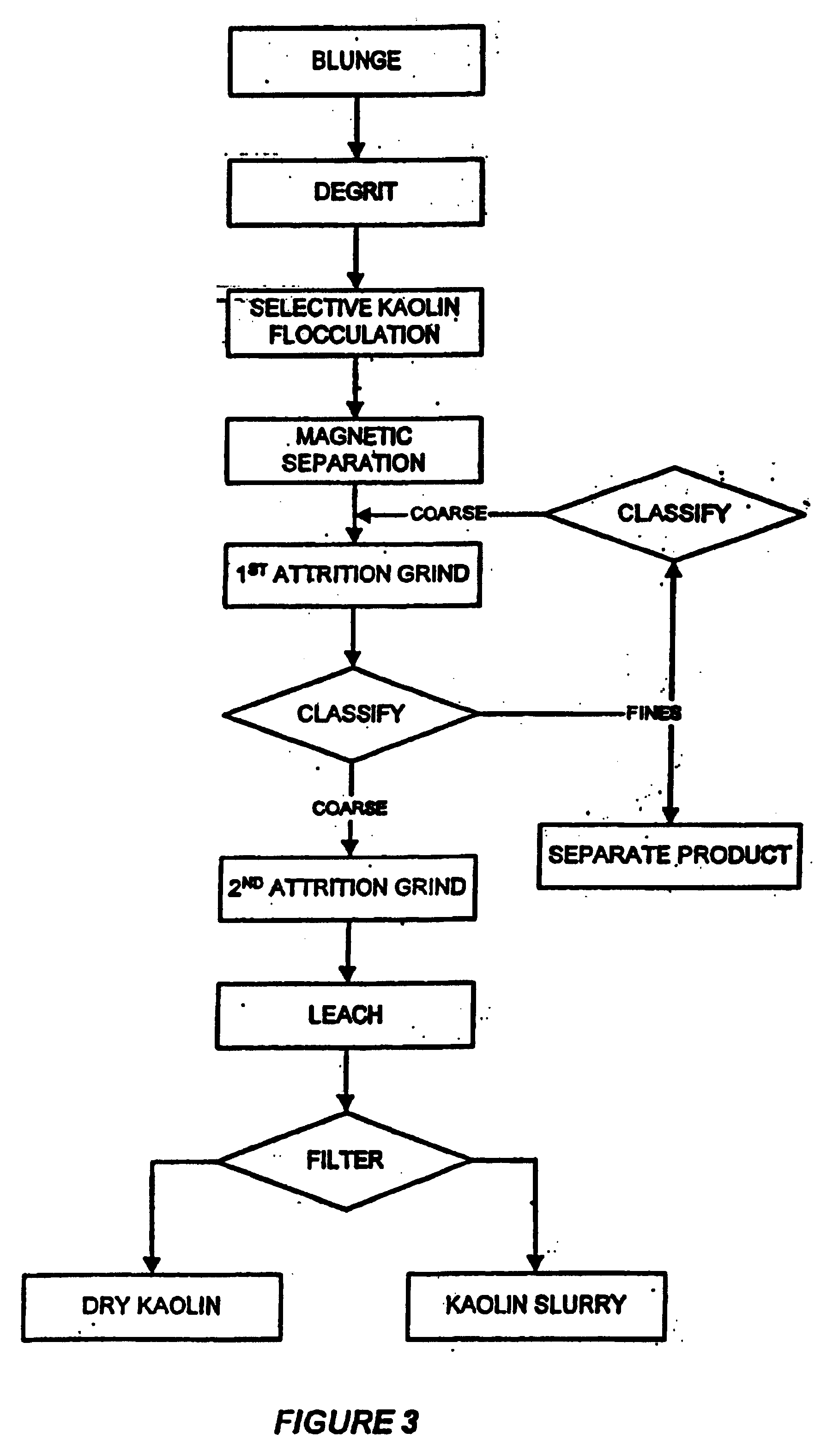Hyperplaty clays and their use in paper coating and filling, methods for making same, and paper products having improved brightness
a technology of clay and paper coating, applied in clayware, soil conditioning compositions, other domestic articles, etc., can solve the problems of significantly higher manufacturing costs of calcined and chemically aggregated kaolins than those of hydrous kaolins
- Summary
- Abstract
- Description
- Claims
- Application Information
AI Technical Summary
Benefits of technology
Problems solved by technology
Method used
Image
Examples
example 1
[0137] This example illustrates a method of refining kaolin to produce a high shape factor kaolin, i.e., greater than or equal to 70, either as a dry kaolin or a kaolin slurry that is stabilized by adding additional water and carboxymethyl cellulose (a thickener). A “stabilized slurry” refers to a slurry where the kaolin does not appreciably settle out of solution over time. It would be expected that adding additional water would have provided a less stabilized slurry. By including a CMC (carboxymethylcellulose) thickener, a stabilized slurry is formed while decreasing the slurry solids. The stabilization process is performed as follows:
[0138] 1. The product is reblunged with a small amount of dispersant, such as 35 / 65 Mill Chem, which is a mixture of soda ash and polyacrylate.
[0139] 2. Add approximately 8 lbs / ton CMC to thicken and stabilize.
[0140] 3. Add biocide to prevent bacterial interaction with the CMC.
[0141]FIG. 1 is a flowchart outlining the process of providing a high ...
example 2
[0142]FIG. 2 is a flowchart outlining a process for the preparation of a high shape factor kaolin. A Georgia crude kaolin is subjected to blunging and degritting steps, followed by magnetic separation and a first attrition grinding step. The product is then classified where the coarse fraction is subjected to a second attrition grinding step, followed by another classification to obtain a product where 70% of the particles have an esd less than 2 μm. This product is then leached and filtered, followed by the formation of either a dry kaolin product or a slurry.
COARSECOARSEFRACTIONFRACTIONFROM 2NDFROM 1STATTRITIONAFTERAFTERPROCESSATTRITIONGRINDING &LEACH-SPRAYPRODUCTGRINDINGCLASSIFYINGING**DRY% solids 33.6%25.5%52.1% 1.2%s.g.1.2621.184Tons8.93.58Brightness87.287.44L95.17a−0.18b2.77TiO20.613Fe2O30.419Brookfield*160Hercules*480Panacea74.797.487.4PSD 39.369.769.1 23.148.0 12.928.46.815.0Recovery100.0%57.3%98.0%99.0%
*(60% solids)
example 3
[0143] This Example provides another process where a Georgia crude kaolin is reblunged and degritted, as illustrated in the flowchart of FIG. 3. After selective flocculation, the kaolin is subjected to magnetic separation. A coarse fraction from a size classification centrifuge is then added to the kaolin prior to a first attrition grinding step. After a size classification, the coarse fraction is subjected to a second attrition grinding step, followed by leaching and filtering to produce a high shape factor product.
PROCESSGrinderGrinderCoarseAFTERBirdPRODUCTFeedProductFractionLEACHING**Spray DryRejects% solids32.732.129.643.996.254.1Brightness84.5685.8385.9887.6787.2182.36L94.695.0295.0895.595.2592.64a−0.2−0.18−0.13−0.22−0.19−0.27b4.193.833.83.113.113.11TiO20.6130.6350.6520.6390.630.666Fe2O30.3940.4060.430.3850.3750.382Brookfield*1360Hercules*50 rpmPanacea51.687.187.185.887.157.8PSD 4866.370.969.369.735.8 27.244.249.246.947.420.4 13.624.328.326.32610.14.87.810.61011.62.7Recover...
PUM
| Property | Measurement | Unit |
|---|---|---|
| temperatures | aaaaa | aaaaa |
| particle size distribution | aaaaa | aaaaa |
| particle size distribution | aaaaa | aaaaa |
Abstract
Description
Claims
Application Information
 Login to View More
Login to View More - R&D
- Intellectual Property
- Life Sciences
- Materials
- Tech Scout
- Unparalleled Data Quality
- Higher Quality Content
- 60% Fewer Hallucinations
Browse by: Latest US Patents, China's latest patents, Technical Efficacy Thesaurus, Application Domain, Technology Topic, Popular Technical Reports.
© 2025 PatSnap. All rights reserved.Legal|Privacy policy|Modern Slavery Act Transparency Statement|Sitemap|About US| Contact US: help@patsnap.com



